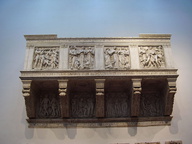Art or Sound
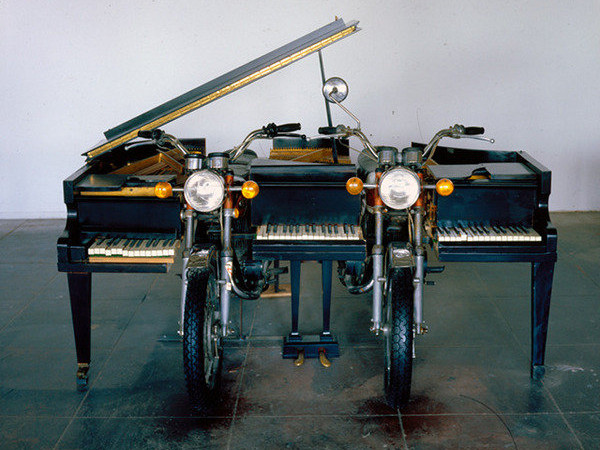
Art or Sound, Fondazione Prada, Venezia
Dal 7 June 2014 al 3 November 2014
Venezia
Luogo: Fondazione Prada - Ca' Corner della Regina
Indirizzo: Santa Croce 2215
Orari: 10-18; chiuso martedì
Curatori: Germano Celant
Telefono per informazioni: +39 041 8109161
E-Mail info: info@fondazioneprada.org
Sito ufficiale: http://www.prada.com
La Fondazione Prada presenterà nella sua sede veneziana di Ca’ Corner della Regina la mostra “Art or Sound”, a cura di Germano Celant, dal 7 giugno al 3 novembre 2014. La vernice si svolgerà da mercoledì 4 a venerdì 6 giugno.
Concepita come un’indagine attraverso il passato e il nostro presente, “Art or Sound” ha l’obiettivo di analizzare lo sviluppo di un dialogo produttivo e articolato. Affronta le problematiche del rapporto tra arte e suono e degli aspetti iconici dello strumento musicale, nonché del ruolo dell’artista musicista e degli ambiti in cui arti visive e musica si sono incontrate e confuse.
Il percorso espositivo si svilupperà dal piano terra nei due piani principali di Ca’ Corner della Regina. Per la prima volta, dopo la riapertura al pubblico del palazzo veneziano, saranno utilizzate le stanze del secondo piano nobile, 1.000 m2 restaurati nel quadro del programma di recupero dell’edificio intrapreso nel 2011 dalla Fondazione Prada. “Art or Sound” vuole sottolineare il rapporto di simmetria e ambivalenza che esiste tra opera d’arte e oggetto sonoro. Intende proporre una rilettura dello strumento musicale che diventa entità plastico-visiva e viceversa, in una continua invasione e inversione di campo, fenomeni riscontrabili nel corso della storia dal Cinquecento a oggi. Il progetto analizza lo sconfinamento tra produzioni artistiche e sonore, tra musica e arti visive, con l’idea di evidenziarne il costante scambio, senza ricercare inutili classificazioni.
Il percorso storico prenderà il via con gli strumenti musicali realizzati con materiali inusuali e preziosi da Michele Antonio Grandi e Giovanni Battista Cassarini nel Seicento e con gli automi musicali - complessi oggetti artistici che uniscono valore estetico e produzione sonora - creati, ad esempio, dall’orologiaio svizzero Pierre Jaquet-Droz nel Settecento. Proseguirà con strumenti automatici e dispositivi meccanici dell’Ottocento in grado di visualizzare la musica attraverso luci e colori. Saranno presentate le ricerche nel campo della sinestesia e le sperimentazioni delle Avanguardie storiche come i celebri Intonarumori (1913) dell’artista futurista Luigi Russolo e alcuni oggetti di Giacomo Balla.
La mostra riunirà, inoltre, strumenti ed opere di artisti degli anni Sessanta, quali gli spartiti originali di John Cage, le scatole sonore di Robert Morris, Bruce Nauman e Nam June Paik, sculture cinetiche realizzate da artisti come Takis e Stephen von Heune e, ancora, installazioni sonore come Oracle (1962 –’65) di Robert Rauschenberg e Handphone Table (1978) di Laurie Anderson. Saranno in mostra anche esempi di appropriazione iconica e formale dello strumento musicale, come i pianoforti di Arman, Richard Artschwager e Joseph Beuys, così come strumenti ibridi, vere e proprie sculture da suonare, come le chitarre e i violini di Ken Butler e i banjo di William T. Wiley. Questa esplorazione nel territorio ambiguo tra arte e suono si spingerà verso le ricerche più recenti di artisti come Christian Marclay, Janet Cardiff, Martin Creed e Doug Aitken, fino a documentare la produzione di una nuova generazione rappresentata, tra gli altri, da Anri Sala, Athanasios Argianas, Haroon Mirza, Ruth Ewan e Maywa Denki.
La mostra sarà arricchita e completata da un’approfondita pubblicazione edita dalla Fondazione Prada. Attraverso il saggio introduttivo di Germano Celant e numerosi contributi di musicologi, artisti visivi, musicisti, compositori e storici dell’arte come Jo Applin, Luciano Chessa, Christoph Cox, Geeta Dayal, Patrick Feaster, Christoph E. Hänggi, Bart Hopkin, Douglas Kahn, Alan Licht, Andrea Lissoni, Noel Lobley, Deirdre Loughridge, Simone Menegoi, Holly Rogers, Jonathan Sterne, David Toop, John Tresch, Eric de Visscher e Rob Young, il volume ricostruirà storicamente e analizzerà le ambiguità, le analogie e le corrispondenze tra oggetti d’arte, dispositivi sonori e strumenti musicali.
Concepita come un’indagine attraverso il passato e il nostro presente, “Art or Sound” ha l’obiettivo di analizzare lo sviluppo di un dialogo produttivo e articolato. Affronta le problematiche del rapporto tra arte e suono e degli aspetti iconici dello strumento musicale, nonché del ruolo dell’artista musicista e degli ambiti in cui arti visive e musica si sono incontrate e confuse.
Il percorso espositivo si svilupperà dal piano terra nei due piani principali di Ca’ Corner della Regina. Per la prima volta, dopo la riapertura al pubblico del palazzo veneziano, saranno utilizzate le stanze del secondo piano nobile, 1.000 m2 restaurati nel quadro del programma di recupero dell’edificio intrapreso nel 2011 dalla Fondazione Prada. “Art or Sound” vuole sottolineare il rapporto di simmetria e ambivalenza che esiste tra opera d’arte e oggetto sonoro. Intende proporre una rilettura dello strumento musicale che diventa entità plastico-visiva e viceversa, in una continua invasione e inversione di campo, fenomeni riscontrabili nel corso della storia dal Cinquecento a oggi. Il progetto analizza lo sconfinamento tra produzioni artistiche e sonore, tra musica e arti visive, con l’idea di evidenziarne il costante scambio, senza ricercare inutili classificazioni.
Il percorso storico prenderà il via con gli strumenti musicali realizzati con materiali inusuali e preziosi da Michele Antonio Grandi e Giovanni Battista Cassarini nel Seicento e con gli automi musicali - complessi oggetti artistici che uniscono valore estetico e produzione sonora - creati, ad esempio, dall’orologiaio svizzero Pierre Jaquet-Droz nel Settecento. Proseguirà con strumenti automatici e dispositivi meccanici dell’Ottocento in grado di visualizzare la musica attraverso luci e colori. Saranno presentate le ricerche nel campo della sinestesia e le sperimentazioni delle Avanguardie storiche come i celebri Intonarumori (1913) dell’artista futurista Luigi Russolo e alcuni oggetti di Giacomo Balla.
La mostra riunirà, inoltre, strumenti ed opere di artisti degli anni Sessanta, quali gli spartiti originali di John Cage, le scatole sonore di Robert Morris, Bruce Nauman e Nam June Paik, sculture cinetiche realizzate da artisti come Takis e Stephen von Heune e, ancora, installazioni sonore come Oracle (1962 –’65) di Robert Rauschenberg e Handphone Table (1978) di Laurie Anderson. Saranno in mostra anche esempi di appropriazione iconica e formale dello strumento musicale, come i pianoforti di Arman, Richard Artschwager e Joseph Beuys, così come strumenti ibridi, vere e proprie sculture da suonare, come le chitarre e i violini di Ken Butler e i banjo di William T. Wiley. Questa esplorazione nel territorio ambiguo tra arte e suono si spingerà verso le ricerche più recenti di artisti come Christian Marclay, Janet Cardiff, Martin Creed e Doug Aitken, fino a documentare la produzione di una nuova generazione rappresentata, tra gli altri, da Anri Sala, Athanasios Argianas, Haroon Mirza, Ruth Ewan e Maywa Denki.
La mostra sarà arricchita e completata da un’approfondita pubblicazione edita dalla Fondazione Prada. Attraverso il saggio introduttivo di Germano Celant e numerosi contributi di musicologi, artisti visivi, musicisti, compositori e storici dell’arte come Jo Applin, Luciano Chessa, Christoph Cox, Geeta Dayal, Patrick Feaster, Christoph E. Hänggi, Bart Hopkin, Douglas Kahn, Alan Licht, Andrea Lissoni, Noel Lobley, Deirdre Loughridge, Simone Menegoi, Holly Rogers, Jonathan Sterne, David Toop, John Tresch, Eric de Visscher e Rob Young, il volume ricostruirà storicamente e analizzerà le ambiguità, le analogie e le corrispondenze tra oggetti d’arte, dispositivi sonori e strumenti musicali.
SCARICA IL COMUNICATO IN PDF
janet cardiff
·
anri sala
·
martin creed
·
doug aitken
·
christian marclay
·
athanasios argianas
·
haroon mirza
·
ruth ewan
·
COMMENTI

-
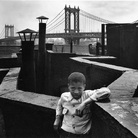 Dal 2 December 2025 al 19 February 2026
Milano | Centro Culturale di Milano
Dal 2 December 2025 al 19 February 2026
Milano | Centro Culturale di Milano
Walter Rosenblum. Il mondo e la tenerezza
-
 Dal 30 November 2025 al 12 April 2026
Gallarate | Museo MA*GA
Dal 30 November 2025 al 12 April 2026
Gallarate | Museo MA*GA
Kandinsky e l’Italia
-
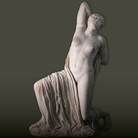 Dal 29 November 2025 al 12 April 2026
Roma | Musei Capitolini
Dal 29 November 2025 al 12 April 2026
Roma | Musei Capitolini
La Grecia a Roma
-
 Dal 22 November 2025 al 3 May 2026
Torino | Sale Chiablese dei Musei Reali
Dal 22 November 2025 al 3 May 2026
Torino | Sale Chiablese dei Musei Reali
Orazio Gentileschi. Un pittore in viaggio
-
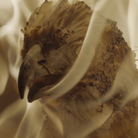 Dal 20 November 2025 al 25 January 2026
Firenze | Palazzo Strozzi
Dal 20 November 2025 al 25 January 2026
Firenze | Palazzo Strozzi
Andro Eradze. Bones of Tomorrow
-
 Dal 21 November 2025 al 28 March 2026
Cuneo | Complesso Monumentale di San Francesco
Dal 21 November 2025 al 28 March 2026
Cuneo | Complesso Monumentale di San Francesco
La Galleria Borghese. Da Raffaello a Bernini. Storia di una collezione
